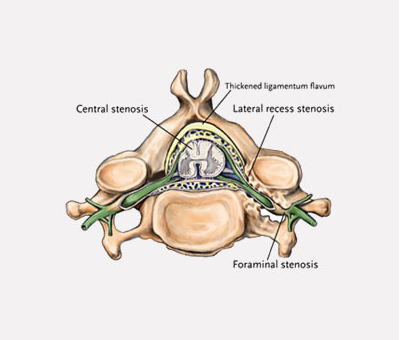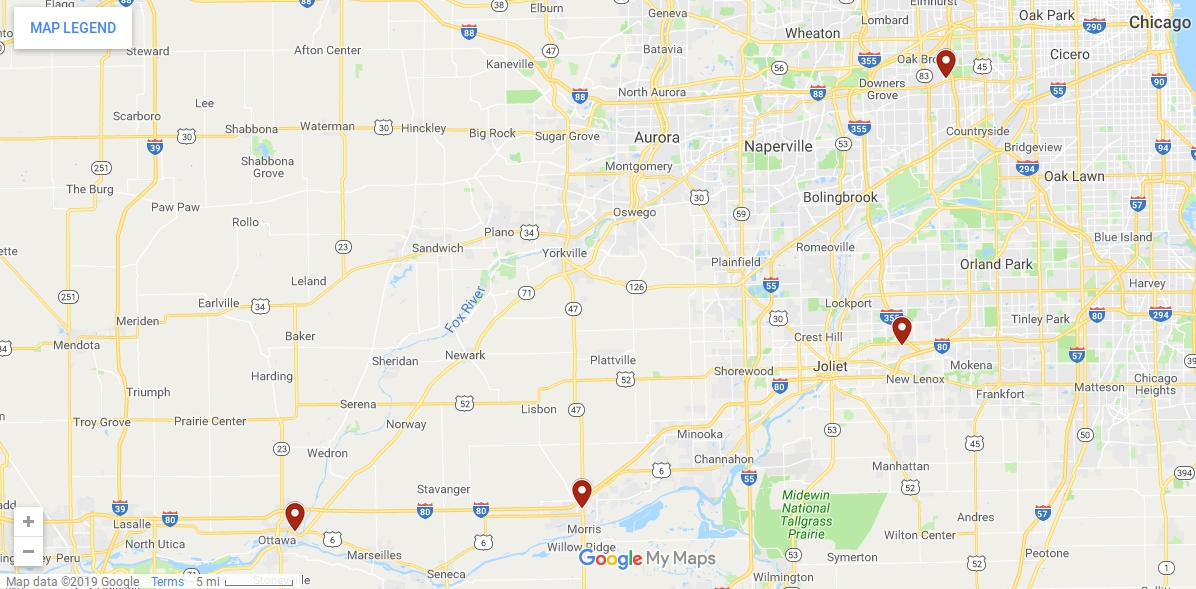-
-

What is Spinal Stenosis?
Spinal stenosis is a disorder that is caused by a narrowing of the spinal canal. This narrowing happens as a result of the degeneration of both the facet joints and the intervertebral discs. In this condition, bone spurs (also called osteophytes) grow into the spinal canal. The facet joints also enlarge as they become arthritic, which contributes to a decrease in the space available for the nerve roots. This condition is known as facet arthropathy.
The ligaments of the spinal column, especially the ligamentum flavum, become stiff, less flexible, and thicker with age, which also contributes to spinal stenosis. These processes narrow the spinal canal and may begin to impinge and put pressure on the nerve roots and spinal cord, creating the symptoms of spinal stenosis.
Stenosis may occur in the central spinal canal (central stenosis) where the spinal cord or cauda equina are located, in the tract where the nerve root exits the central canal (lateral recess stenosis), or in the lateral foramen (foraminal stenosis) where the individual nerve roots exit out to the body.
-
What Causes Spinal Stenosis?
Spinal stenosis may be caused by a number of processes that decrease the amount of space in the spinal canal available for the nerves. Degenerative causes are the most common, but stenosis can occur in individuals who were born with a spinal canal smaller than normal (congenital stenosis) or have rare conditions such as tumors and metabolic conditions.
What Are the Symptoms?
The symptoms of spinal stenosis may be the direct result of physical compression of the nerve roots causing radiculopathy into the legs or arms. In people who have significant spinal stenosis, they will begin to notice pain in the buttocks, thigh or leg that develops with standing or walking, and improves with rest. In some cases, a person will complain of leg pain and weakness without having any back pain.
More severe symptoms of the disorder include numbness, tingling, and weakness in the lower extremities. Certain positions can alleviate the symptoms of spinal stenosis by increasing the amount of space available for the nerves. These positions usually involve flexion (bending) of the lower spine and bending forward. For instance, most people with spinal stenosis can ride a bike and walk up an incline or flight of stairs without any pain.
They can often walk for extended distances if they have something to lean on, like a shopping cart. However, if they are walking down an incline or flight of stairs, or if they have to give up the shopping cart, their symptoms will often reappear. The presentation and severity of the symptoms of spinal stenosis depends on several factors, including the original width of the spinal canal, the susceptibility of the nerves involved, and the unique functional demands of the person and their individual pain tolerance.
How is it Diagnosed?
The diagnosis of spinal stenosis begins with a complete medical history and physical examination. MRI or CT scanning can visualize the canal where the nerves live and quantify the degree of narrowing as well as rule out other causes.
How is Spinal Stenosis Treated?
The appropriate use of medications is an important part of non-surgical treatment. This can include anti-inflammatory drugs, analgesics, muscle relaxants, anti-seizure medication, and antidepressant medication. Surgical treatment are reserved for people who have not had success with non-surgical treatment.
Interventional Pain Management Treatments:
- Percutaneous Disc Decompression
- Epidural Steroid Injections
- Caudal Steroid Injections
- Trigger Point Injections
- Neuromodulation
-


